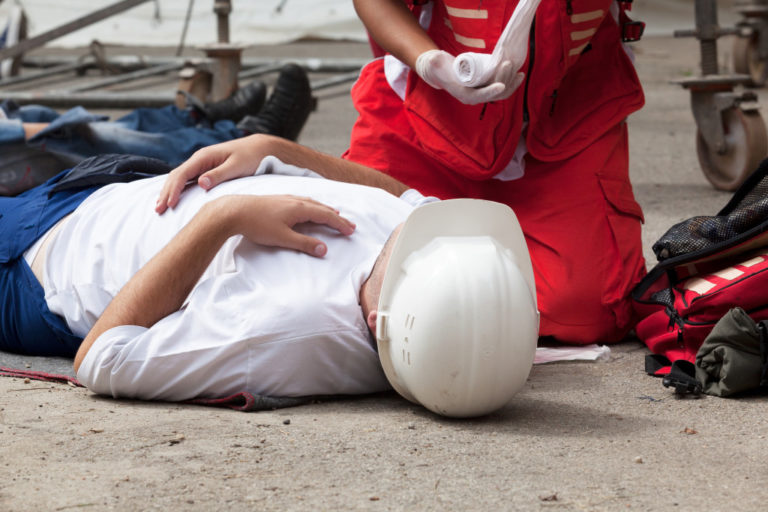Workplace hazards can cause life-altering trauma and injuries. Whether you’re typing and sitting at the desk all day or cleaning the windows of a skyscraper, all sorts of accidents can happen at your place of work if you’re not careful.
When you get injured, not only will you experience pain and mobility restrictions, but you would also have to deal with hefty medical bills and loss of income. Depending on the severity of your injury, it could disrupt your career or even lead to permanent disability.
In addition to taking precautions and staying alert while working, it’s important to educate yourself about the most common injuries in your industry and what you can do to prevent them.
Continue reading to know what sorts of hazards are present in different industries.
Construction, industrial & energy sectors
Workers in these industries are more likely to get injured as hazards are plenty and varied. Some of the most common safety risks include:
- Repetitive motion
- Hand-arm or whole-body vibration
- Awkward postures, stress, and heavy loads
- Wood & plaster dust and other particles
- Lead fumes and other toxic vapors
- Heat and chemical emissions
- Heights and obstructions
- Sharp objects and heavy tools
- Exposure to chemicals
One of the best measures to take to prevent serious workplace injury is to get fully trained and prepared for all kinds of hazards in your industry. While this is a requirement for taking a CSCS test, it’s important to know preparedness and risk reduction measures by heart. These include:
- Wearing the appropriate personal protective equipment (PPE)
- Understand the safety vulnerabilities of the site
- Don’t take shortcuts to complete jobs faster
- Practice good housekeeping or keep the workplace orderly
- Take necessary breaks to release any tension in the body
- Do simple stretches before starting work
- Have ample sleep and eat regularly when reporting for work
- Avoid unnecessary distractions (i.e., taking calls, immersing in a conversation) when operating heavy machinery
Office workers and telecommuters
You might think that office workers have it easy, but the sedentary nature of their work could be hazardous to their health and safety, as well. The same goes for people working remotely or from home. These are some of the most common hazards for office workers:
- Repetitive stress/work
- Awkward posture and movements
- Sitting for long periods
- Poor workstation ergonomics
- Fires and earthquakes
- Lifting, handling, and moving office supplies
- Work-related stress
- Diseases linked to stress and sedentary lifestyles
- Workplace bullying and violence
- Slips and trips
Some of the things you can do to prevent serious health and safety issues include the following:
- Request for a more ergonomic workstation
- Use a standing desk more often
- Observe proper posture and computer use
- Join fire and earthquake drills
- Get help when lifting heavy objects
- Take rest days and have enough sleep
- Eat healthily and exercise regularly

Warehouse and logistics sector
Whether you’re operating a forklift in a warehouse or driving a truck across the country, you can be exposed to many kinds of physical, biological, and ergonomic hazards such as:
- Slips, trips, and falls
- Fires
- Heavy materials
- Moving parts
- Chemical substances
- Road accidents
- Repetitive stress
- Heavy equipment
- Falling objects
- Awkward postures
- Whole-body vibrations
To prevent serious injuries, be sure to follow the recommended occupational safety measures for your industry. In the case of warehouse workers, these are:
- Know the different hazard zones
- Use safe lifting techniques
- Clear paths of any obstructions
- Keep floors and surfaces dry and clean
- Maintain speed limits of forklifts
- Watch out for safety signs
Here’s what truck drivers can do to prevent common logistics hazards:
- Maintain proper posture while driving
- Ensure the cab is clean and comfortable
- Maintain speed limits and follow traffic rules
- Slow down whenever driving on bumpy roads
- Have enough sleep and eat properly
- Take rest breaks when needed
- Regularly inspect the vehicle and endorse repairs when needed
- Take refresher training courses whenever possible
When it comes to workplace health and safety, employers have a bigger share of responsibilities. But employees can also take the proactive approach and make it their duty to keep themselves and their co-workers safe, as well.
The best place to start is to follow the rules set out by your HR religiously like wearing your PPE at all times. Keep in mind that a single slip in judgment could lead to serious injury, not just to you but to others. No matter how safe you think your workplace is, know that there are always risks and hazards wherever you go.
Fortunately, you can prevent all these by educating yourself about the hazards and being compliant with health and safety policies.

